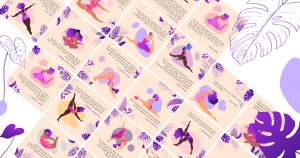This bundle includes 20 high quality images with unique and relevant texts. Download these ready made content for your social promotions.
Varicose veins, also known as varicoses or varicosities are enlarged, twisted veins. Varicose veins typically appear swollen and raised, and have a bluish-purple or red color. Although varicose veins can develop elsewhere on the body, they are more common in the legs. Varicose veins are not considered a serious medical condition, but they can be uncomfortable, sometimes painful and lead to more serious problems. And, because they may be very noticeable, they may cause people to feel embarrassed and ashamed of their bodies. The condition is very common, especially in women. Around 25 % of all adults have varicose veins.

Varicose veins are enlarged, swollen, twisted veins that usually have bluish-purple or red color. Varicose veins can happen anywhere in the body, but are more common in the lower legs.

Non-painful signs and symptoms of varicose veins are:
- Dark purple or blue veins
- Enlarged, twisted veins.
- Changes in skin color around a varicose vein
- Swollen and raised looking, bulging veins

Painful signs and symptoms of varicose veins are:
- An achy or heavy feeling in the legs
- Burning, throbbing, muscle cramping and swelling in the lower legs
- Worsened pain after sitting or standing for a long time
- Itching around one or more of the veins

Causes
The veins have one-way valves so that the blood can travel only in one direction. If the walls of the vein become stretched and less elastic, the valves get weaker. A weakened valve may allow blood to leak backwards or flow in the opposite direction. When this occurs, blood can accumulate in veins, which then become enlarged and swollen.

Risk factors
Factors that increase your likelihood of developing varicose veins include- being female, family history, older age, being overweight, having a job that requires long periods of standing, and being pregnant.

Gender
Women are more likely to be affected by varicose veins than men. According to research, this might be because female hormones loosen the vein walls, which makes the valves more prone to leaking.

Genetics
Your risk of developing varicose veins is increased if a close family member suffers from this condition. Studies suggest varicose veins may be partly caused by your genes.

Being overweight
Being overweight puts extra strain on your veins, making it more difficult for them to send blood back to your heart. This may put greater pressure on the valves, making them more prone to leaking.

Occupation
Some research suggests jobs that require long periods of standing can increase your risk of developing varicose veins.This is because your blood does not flow that easily when you’re standing for long periods of time.

Pregnancy
During pregnancy, the amount of blood increases to help support the developing baby, putting extra pressure on your veins.Increased hormonal levels during pregnancy also cause the muscular walls of the blood vessels to relax, which also increases your risk.

Age
Aging causes the veins to start to lose their elasticity and the valves inside them stop working well, increasing the risk of developing varicose veins.

Prevention
Improving blood flow and muscle tone with the following measures may reduce the risk of developing varicose veins.
- Avoid high heels
- Changing your sitting or standing position regularly
- Eating a high-fiber, low-salt diet
- Exercise
- Raising your legs when sitting or lying down
- Maintain your weight

Complications
Complications of varicose veins, although rare, can include: ulcers , formation of blood clots, bleeding.

If you have concerns about how your veins look and feel and self-care measures haven’t helped, you should definitely see a healthcare provider.

Although there isn’t a cure for varicose veins, treatments like elastic stockings, injection therapy, laser therapy and vein surgery can reduce their appearance and relieve discomfort.

Elevation
To increase the blood flow and decrease strain on your veins, you should elevate your legs above your waist several times throughout the day.

Elastic stockings
Supportive stockings compress your veins and reduce the feeling of discomfort. The compression stops your veins from stretching out and aids blood flow.

Injection therapy (sclerotherapy)
During sclerotherapy, a healthcare worker injects a solution into your vein. The injection causes the vein walls to stick together, eventually, causing the veins to turn into sca tissue and fade away.

Laser therapy
In a minimally invasive procedure called endovenous thermal ablation, a healthcare provider uses a catheter (a long, thin tube) and laser to close off a damaged vein.

Vein surgery
During this procedure, the surgeon ties off your affected vein to stop blood from pooling. The surgeon may strip the vein to prevent varicose veins from reappearing.
Ads Design Maker for Social Media Needs
Everyday tool for SMM needs.



